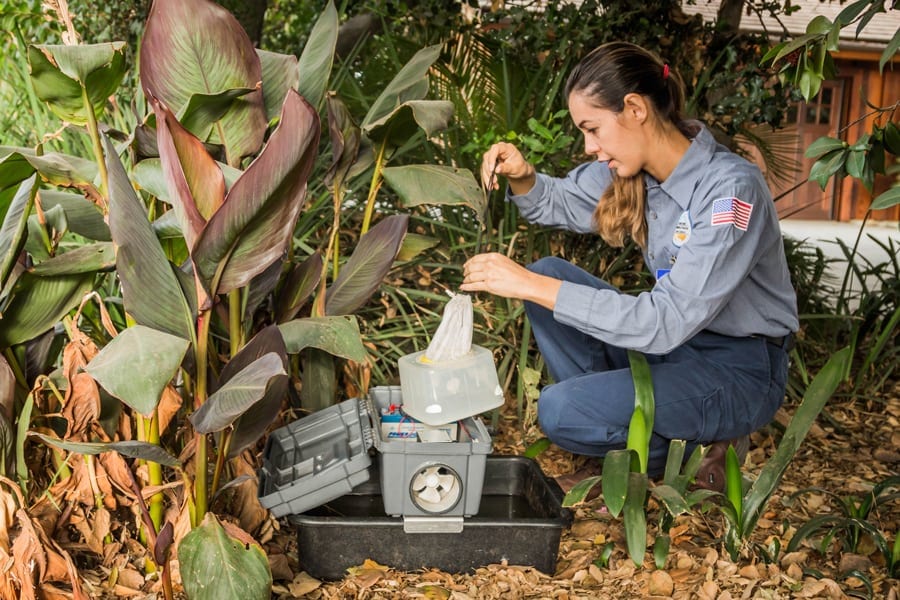By Michele Lutes
Signal Staff Writer
Mosquitoes are a complicated business.
The insect has been in the news lately because of a Los Angeles-area invasion of the Aedes mosquito. Understanding the problem is important.
The mosquito population in the greater Los Angeles area is always being monitored and tested for diseases by the Vector Control District, which also educates residents on the dangers of mosquitoes and how to get rid of them.
Vector Control
The Greater Los Angeles Vector Control District is one of five districts working to prevent diseases that mosquitoes transmit.
“We cover Santa Clarita all the way to Long Beach,” said Kelly Middleton, director of community affairs for Vector Control. “It is a very large area.”
The district monitors and surveys the mosquito population within the district, along with providing education and outreach to residents about vectors in their area.
The surveillance department puts traps in every city. The operations department surveys for infestations in public areas and takes service requests from private properties.
“The departments work in conjunction to protect public health,” said Levy Sun, public information officer for the San Gabriel Valley Mosquito and Vector Control District.
The program is paid for by a benefit assessment, collected on the property tax bill, Middleton said. Their ultimate goal is to work to suppress and reduce the risk of disease transmission in vectors.
“A vector is any arthropod, insect, rodent or other animal of public health significance capable of harboring or transmitting the causative agents of human disease to humans,” according to the website of L.A. County Vector Control.
The vectors they control are mosquitoes, midges and black flies.
Culex mosquitoes, for example, are seen in the area every year, Middleton said. But the most recent type of mosquitoes the district is concerned about are Aedes.
“Aedes mosquitoes are continuing to spread. They will make it to Santa Clarita within a year or so if they are not here already,” Middleton said.

Mosquito species
A combination of factors differentiate Culex mosquitoes from Aedes mosquitoes, but both types of insects can transmit deadly diseases to humans.
The Culex can transmit West Nile virus, Sun said. “West Nile is really the biggest threat, because people have died from it in L.A. County.”
The presence of Aedes mosquitoes increases risk of Zika virus and other diseases, Middleton said. “We do not have indication they are transmitting diseases, but our concern is they could be transmitting Zika.”
“Aedes mosquitoes can spread like wildfire in neighborhoods,” Sun said. “Before the Aedes, we were focusing on the large infestations of Culex and where they would lay their eggs, like swimming pools. With the Aedes coming into town, we are now searching through people’s yards, for stagnant water as small as a bottle cap.”
“Aedes can stay viable for at least a year,” Sun said. “That is why they are spreading so quickly. Their egg-laying behavior follow where people go and many of them aren’t even aware.”
Aedes tend to bite below the adult waist down to the ankles, Sun said. Kids are generally bit more often, as they are shorter and don’t know to swat them away.
Ridding mosquitoes
The district offers free assistance to residents in their area, but there are also a few things they suggest you do to help out with keeping the population down.
“Keep standing dirty water out of your property, keep your pools, fountains and ponds maintained,” Middleton said.
When outside, using repellant will help keep mosquitoes away.
“Repellents do the job,” Middleton said. They should be approved or recommended by the Environmental Protection Agency and Centers for Disease Control and Prevention.
There are many repellants to choose from, and their goal is to make you invisible to the mosquitoes.
Key ingredients to look for include: Deet, picaridin, oil of lemon eucalyptus and IR3535, Sun said.
Do not scratch the bite — it can get infected,” Middleton said. “If you do get sick within a week and believe it is related, go see your doctor.”
For assistance or more information, go to www.glacvcd.org or www.sgvmosquito.org.













